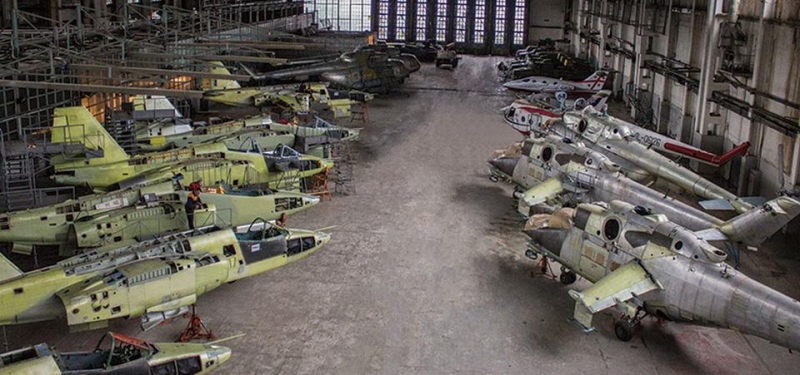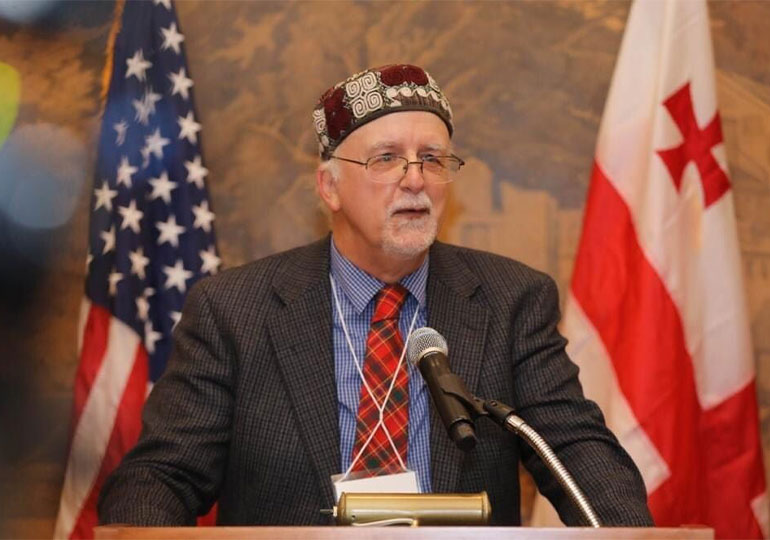The Republic of Georgia is ready to flip a switch, power up an old factory and churn out copies of the rugged old Su-25 Rook attack plane, the Soviet answer to America’s A-10 Warthog.
But don’t hold your breath awaiting factory-fresh Rooks to flood the warplane market. The tiny Eastern European country, population 3.7 million, can’t afford to buy a bunch of Su-25s. And it’s not clear that the international market is clamoring for the plane, either.
“We have absolutely all the resources—technical, intellectual or human—to be able to restore, produce, produce and sell Su-25s with our own efforts,” Georgian minister of defense Irakli Gharibashvili said in early June. A number of countries are interested in the type, Gharibashvili claimed.
It’s true that the brute-simple, subsonic Su-25 is a popular warplane. Around 485 copies fly with the air forces of no fewer than 24 countries, accounting for three percent of all the world’s manned, fixed-wing combat aircraft.
With its thick armor and long, straight wing, the Rook is a stable and effective weapons platform for low-level attacks on lightly-defended ground forces.
It is not, however, a very modern aircraft. The first Su-25 entered service with the Soviet air force in 1981, a few years after the roughly equivalent A-10 equipped its first front-line U.S. Air Force squadron.
However, where the Americans have steadily upgraded the A-10 with new electronics, defensive systems and guided munitions, most Su-25s still fly with the crude fire-control systems, meager self-defense suites and unguided weaponry that they possessed in the 1980s and ‘90s.
During the Soviet era, Su-25 production centered on what is now the Tbilisi Aircraft Manufacturing, a factory in Georgia’s capitol. The facility built around 800 Rooks starting in 1978.
But when the Soviet Union dissolved in 1991, the Republic of Georgia was left with a factory it could not afford to maintain. Russia set up a new Su-25 plant in Siberia in order to handle upgrades to its own Rook fleet. Ukraine likewise upgrades its own Rooks at one of its own facilities.
Georgia struggled to make use of the Tbilisi factory. Workers assembled a few incomplete Su-25s to expand the Georgian air force’s inventory of mostly leftover Soviet Rooks. As recently as 2001, Georgia offered to upgrade Russia’s 300 or so Su-25s at the Tbilisi plant.
Then in 2008, Russia and Georgia went to war over the breakaway Georgian region of South Ossetia. Georgia’s roughly 10 Su-25s flew a few missions in the early hours of the war before effectively going into hiding in the face of overwhelming Russian air superiority.
Meanwhile Russian Rooks attacked Georgian troops and, in an ironic twist, even bombed the Tbilisi factory that had produced them. The Russian Su-25s were vulnerable. At least three fell to Georgian air defenses.
An Australian air force newsletter speculated that the radar-warning gear on Russian Su-25s wasn’t tuned to the frequencies of Georgia’s Soviet-vintage surface-to-air missile systems, meaning the Russian pilots never knew when a missile was incoming.
There were other problems with Russia’s Rooks. “They lacked sophisticated aiming devices and did not have sufficiently long-range missiles that could be launched outside the enemy air-defense envelope,” the Australian Air Power Development Center noted. “They also did not have any ‘smart’ weapons and lacked electronic countermeasure systems.”
The war ended in a Georgian rout. Russia took possession of South Ossetia. In the war’s aftermath, Tbilisi reformed its 33,000-strong armed forces. As part of a potential $9-billion program, officials hoped to invest in new communications, anti-tank weaponry and air-defense systems. But warplanes were a low priority. It can cost more than $10 million to build a new Su-25.
In 2010, Georgia disbanded its air force as an independent military branch, a move that proved unpopular with the public. “The decision to abolish the Georgian air force concerns many people,” Georgian analyst Katherine Hilkert wrote for the U.S. Foreign Military Studies Office in Kansas.
Tbilisi reformed the air force in 2016. Four years later, its arsenal is modest. The Georgian air force operate 58 aircraft, most of them aging, Soviet-era helicopters. There are 10 Su-25s in the inventory. It’s hard to imagine Georgia needing, or affording, more Rooks.

Forbes Georgia
"Forbes Georgia-ის სარედაქციო ბლოგპოსტების სერია "როგორ გამდიდრდა“ და "საქართველო რეიტინგებში".












